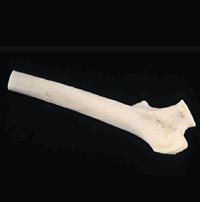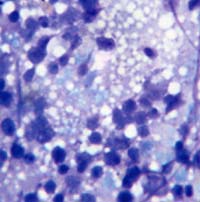EU directive to regulate quality, safety of human tissues and cells
Member states are responsible for implementing the directive by 2006.
 The
safety and quality of human tissues, cells and related products, including bone
marrow, stem cells and allograft tissue used for orthopaedic and other medical
procedures, will be regulated under a European Union tissue and cell directive
adopted by the Council of Ministers earlier this year.
The
safety and quality of human tissues, cells and related products, including bone
marrow, stem cells and allograft tissue used for orthopaedic and other medical
procedures, will be regulated under a European Union tissue and cell directive
adopted by the Council of Ministers earlier this year.
European Union (EU) member states are required to implement the directive by April 2006.
Once implemented, compliance will be enforced by the national competent authorities.
The directive — 2004/23/EC — stipulates that tissue and cell donations be made voluntarily and without remuneration and makes it the responsibility of EU states to promote tissue, cell and organ donation. Records regarding donation, processing and use of human tissue and cells must be retained for 30 years under the directive, ensuring these tissues and cells are traceable, if necessary.
“We now have rules in place with comprehensive and binding requirements for the safety and quality of cells and tissues from donor to patient. This is positive news for hundreds of thousands of patients in Europe who, every year, undergo some form of therapeutic treatment based on the use of human tissues and cells. Patients can now be sure that human tissues and cells derived from donations in another Member State, nonetheless, carry the same guarantees as those in their own country,” David Byrne, EU commissioner for health and consumer protection, said in a press release.
Inclusions, exclusions
The rules do not apply, however, to manufactured products that include human tissues and cells or to research using human tissues and cells, according to the directive. And, they do not impact the manufacturing processes themselves or affect how the tissues and cells are ultimately used, such as in which manufactured products they are included or in which medical procedures they are used.
Ewan Gicquel, research director at EuropaBio, Brussels, the European trade association for bioindustries, said, “This is the first set of rules that applies to tissues and cells. The directive applies also to haematopoietic peripheral blood, umbilical cord, bone marrow stem cells, reproductive cells, fetal tissue and cells, adult and embryonic stem cells, as well. But, it does not apply to tissues and cells used as an autologous graft during a procedure.”
Blood and blood components, as well as organs, are not covered.
The need for such a directive was great and its adoption was supported by industry, he said.
|
|
|
| Allograft tissue (left) and bone marrow cells (right) used for orthopaedic procedures will be regulated under a new European Union directive. Records regarding the donation, processing and use of such tissues must be retained for 30 years under the new directive. | |
Directive for tissue-engineered products
“In the human tissue area, there has been tremendous variation from member state to member state regarding the regulation of these products. The intention of the directive, and of future ones having to do with human tissues, is to minimize that variation,” said Maria E. Donawa, MD, president, Donawa Consulting Srl., a regulatory consulting company in Rome. She is a member of the board of the Regulatory Affairs Professional Society.
Tissue-engineered products were not included in this latest directive, nor are they covered in the EU medical device directive that was previously adopted. “You need to make sure that these products are sourced correctly, that the donation is properly managed, and that’s what this directive is for,” Donawa explained.
But, in order to regulate the safety and quality of manufactured cellular and tissue products a separate EU directive is currently under consideration. Interested parties were asked to submit comments on it through April 30. “We hope they will come up with a proposal by the end of the year.” Gicquel said.
Another area of concern is accreditation of manufacturing facilities that handle these tissues, an area where some EU groups say more work is needed.
Global harmonization of rules for human tissue and cell safety and quality is also being discussed in the EU and worldwide. Though difficult to implement, it would be a way of ensuring, for example, that products imported into the EU meet certain basic safety and quality standards.
For more information:
- Directive 2004/23/EC of the European Parliament and of the Council of 31 March 2004 on setting standards of quality and safety for the donation, procurement, testing, processing, preservation, storage and distribution of human tissues and cells. Official Journal L 102, 07/04/2004 P. 0048 - 0058.


